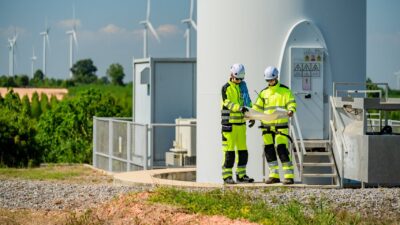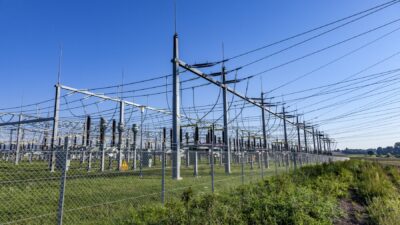Oxera AI policy map – October 2025
Drawing on Oxera’s combined expertise in digital policy and regulation, as well as in analytics, data science and AI, we have developed a database that tracks key national and supranational AI policy developments across the European Economic Area (EEA) and the UK. This curated collection brings together legal texts, strategy documents, and other influential publications relevant to the governance of AI.
Following our previous publication of the AI Policy Map on 26 June 2025, we have introduced several updates and enhancements in this edition based on the updated OECD AI Policy Observatory.1
We have refined the scope of policies included, and updated their categorisation, which is explained in more detail below. A new drop-down menu on the upper right-hand side of the map allows users to interactively filter by policy category.
Policies are categorised into the following five groups.
- Law and legislation: legally binding texts that were enacted by a legislative authority
- Regulation: legally binding texts from a government authority that did not require parliamentary legislative approval
- Guidance on legal implementation: instructions on how to implement a law, regulation, policy or other rule
- Principles for trustworthy AI: guidelines, propositions, codes of practice or other frameworks with voluntary participation
- AI lifecycle documentation requirements: stipulations for documentation of the proper functioning of the AI systems throughout their lifecycle
Click to optimise the AI Policy Map in full screen format.
* This refers to the number of AI policies featured in the map. See the methodological note for details of how they were selected.
Methodological note
The policies featured in this map are sourced primarily from the OECD.AI Policy Observatory and Global Partnership on AI, powered by the European Commission/OECD database of national AI policies/OECD.AI Policy Navigator (retrieved on 5 August 2025). This core dataset was manually supplemented with additional policies not captured by the OECD.AI Policy Navigator; based on Oxera expertise in Digital Policy & Regulation.
Our focus is on policies from the European Economic Area (EEA) and the UK, specifically those relating to AI guidance, legislation and regulation. We have then relied on the OECD’s classification, considering only those falling within the aforementioned geographic area and scope. For policies that we have added manually, as well as for the EU policies that do not fall under the OECD’s classification, we have assigned types manually according to the OECD’s categorisation.
For policies sourced from OECD.AI, we have conducted quality checks to verify their currency, relevance and completeness. Where necessary, we have updated policy titles and URLs to reflect more recent or more authoritative sources.
While we have made every effort to ensure the accuracy and completeness of the policy information presented, Oxera does not accept liability for any actions taken based on this content. We welcome notifications of missing policies, corrections, or suggestions for improvement at [email protected].
Footnotes
1 OECD.AI (2025), OECD.AI Policy Navigator, accessed on 13/10/2025, https://oecd.ai/dashboards.
Related

Ofgem’s RIIO-ED3 SSMC
On 8 October 2025, Ofgem published its Sector Specific Methodology Consultation (SSMC) for the forthcoming RIIO-ED3 (ED3) price control for GB electricity distribution networks. We look at some of the key themes emerging from the consultation ahead of the final methodology decision, which is expected to be published in December… Read More

What are the challenges of decarbonising industry in the transition to a green economy?
Earlier this year, the European Commission set out its recommendations for implementing its clean industrial deal—aimed at supporting the EU’s decarbonisation goals while maintaining global competitiveness. Although sectors like electricity generation have seen substantial emissions reductions, many industrial areas still face a steep path ahead. In this episode of Top… Read More

